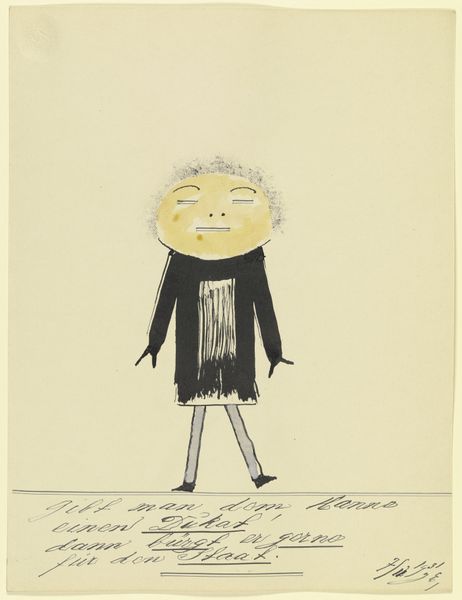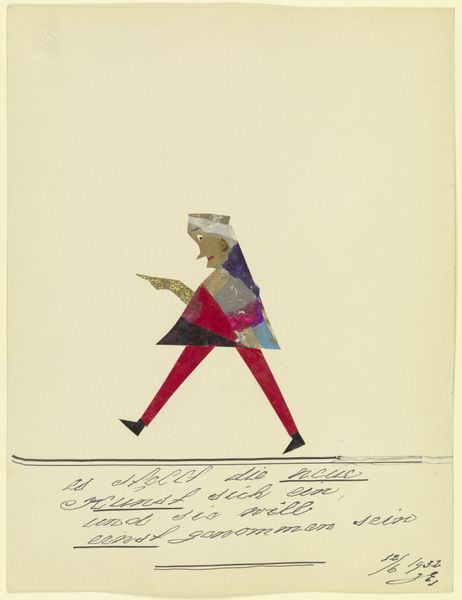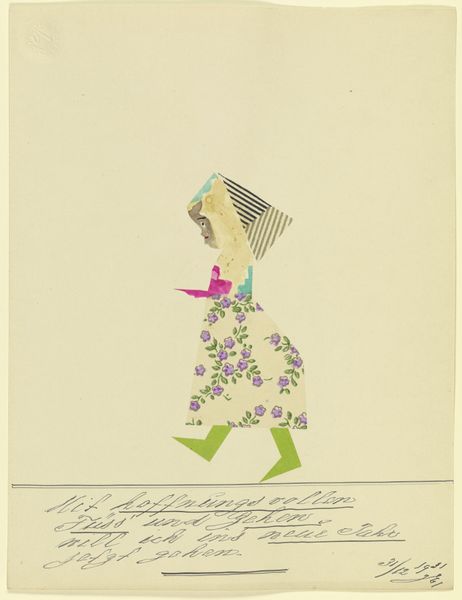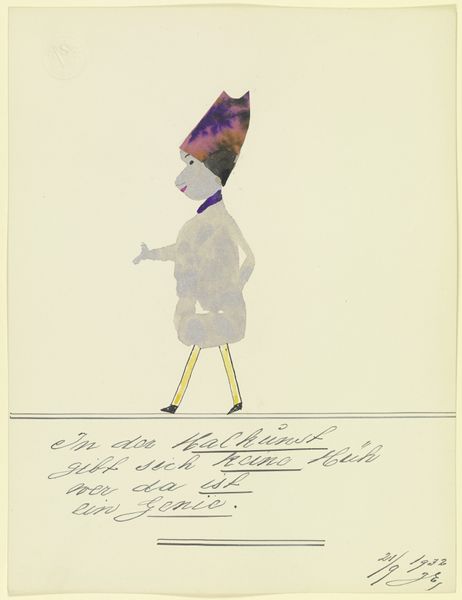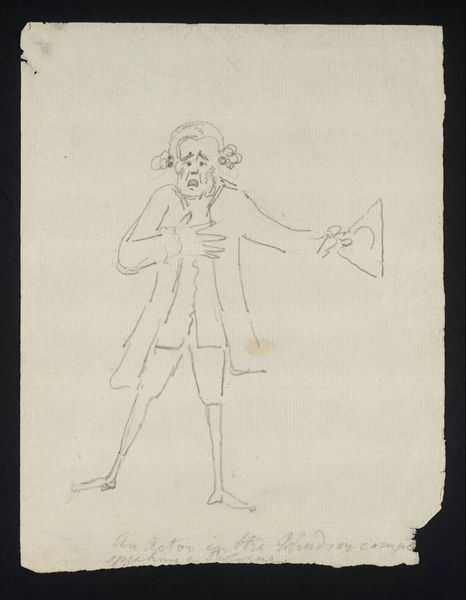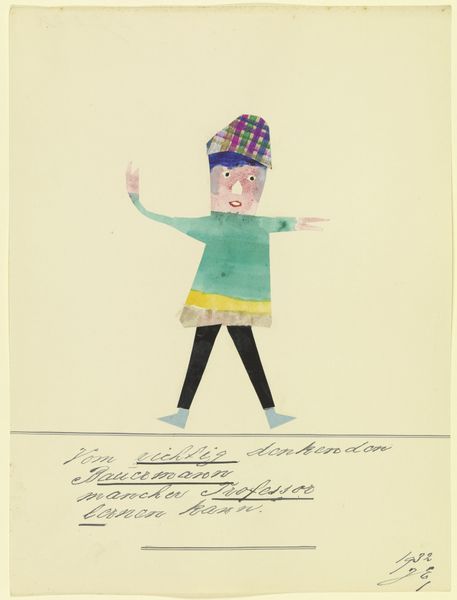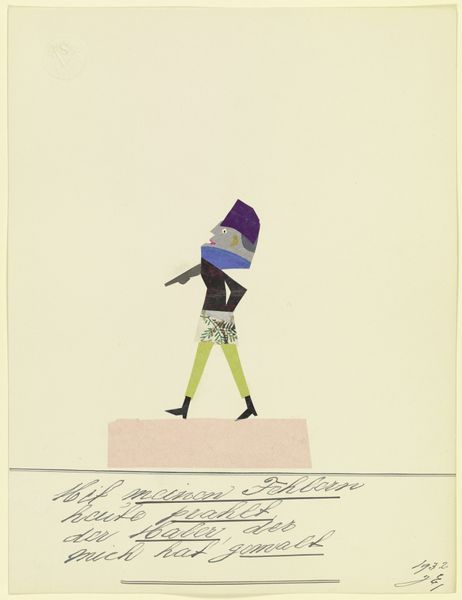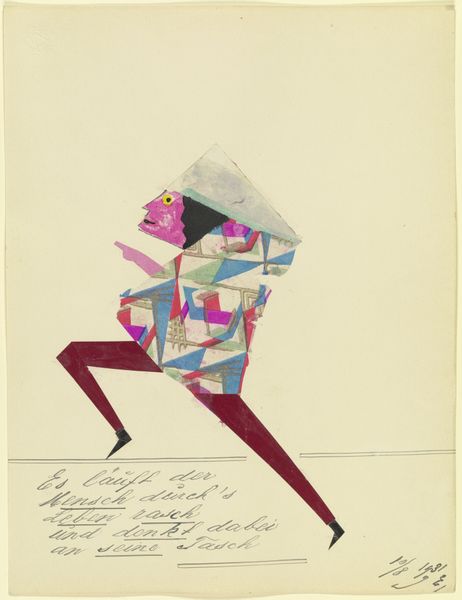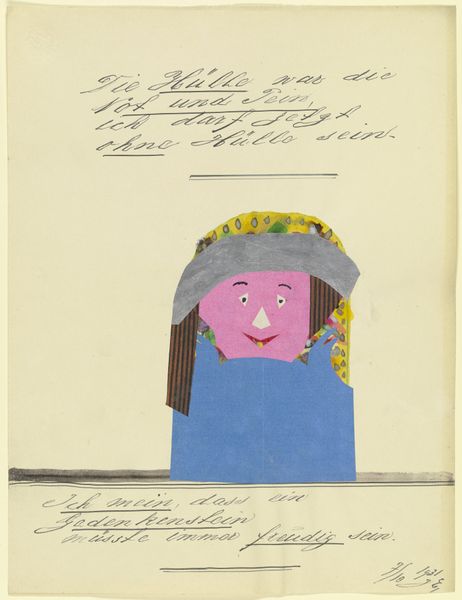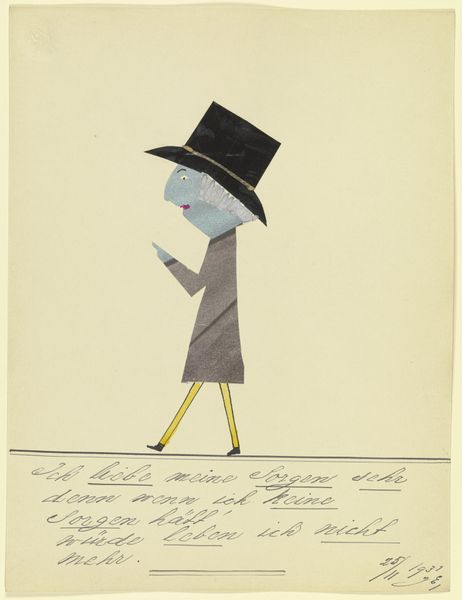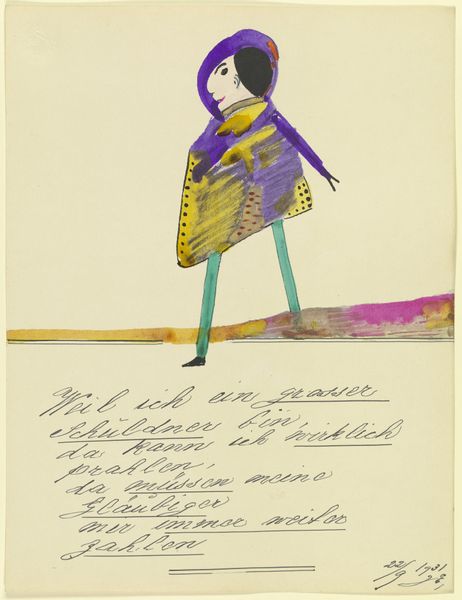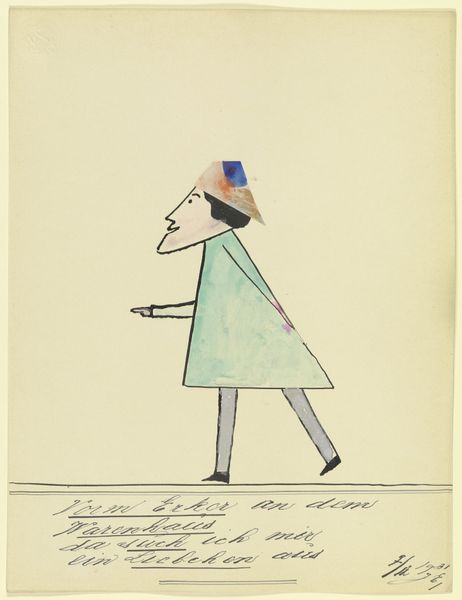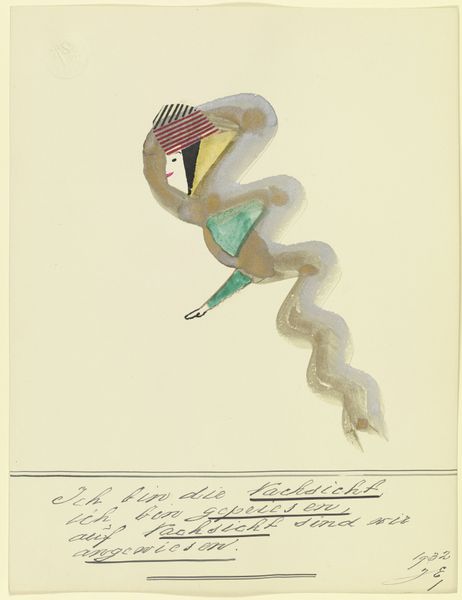
Copyright: Public Domain
Editor: This is John Elsas’s drawing "15166 (‘Sitz ich in der Strassenbahn …’)" from 1931, made with ink on paper. The figure, somewhat cartoonish, looks rather… self-important. What do you see in this piece? Curator: I see a sharp commentary on societal gaze and performativity, especially within the context of 1930s Germany. The exaggerated features, typical of caricature, speak to a broader critique of bourgeois identity and the construction of self in public spaces. Editor: So, it’s not just a funny drawing, but a social commentary? Curator: Absolutely. Consider the title, "Sitting in the tram…" – it implies observation, being seen. How does the figure present itself? Think about gender roles. Do you perceive something subversive here? Editor: The figure’s puffed-up appearance… maybe it's satirizing conventional masculine pride, especially considering the cultural shifts of the Weimar Republic? Is the gaze that of a dandy, self-aware, yet absurd? Curator: Precisely! And think about Expressionism’s legacy here; the distortion serves to unmask underlying anxieties. Elsas’ work can be viewed as a premonition to increasingly fascist attitudes of the era, almost like calling out to hyper-masculinity. It is not only about making us laugh; it makes us consider the unease beneath the surface. What do you think about that? Editor: That makes the piece far more impactful. I was stuck on the comical aspects, but framing it within the social and political turmoil… it adds layers of meaning and a sharp sense of warning. Curator: Exactly. It reveals art’s power to challenge and provoke reflection on power dynamics. Editor: I appreciate understanding this as more than just a simple drawing; I see now how art reflects and questions the prevailing norms. Thank you.
Comments
No comments
Be the first to comment and join the conversation on the ultimate creative platform.
